Do you remember when the “low-fat” and “fat-free” craze rocked the nutrition world? The 1990s and 2000s were peppered with low-fat products, encouraging us to eat as much as we wanted because they were fat-free (implying that, of course, fat that you eat makes you fat. This publication explains a bit more about how the low-fat ideology caught on!
Well, what happened? Unfortunately, obesity rates and rates of chronic disease continued to escalate, even as we reduced fat consumption. We not only got less healthy, but we had more cravings, leading to the plethora of snack foods that we all came to rely on, and felt a lot less satisfied by our food (I mean, come on, you can’t tell me that a fat free cookie or salad dressing tastes the same as the real thing!).
So, low-fat and fat-free are not the answer, but could fat even be … healthy? The answer is yes. Fat, in moderation, is an incredibly healthy part of a balanced diet. Anything in excess can make you store body fat, so I don’t recommend a free-for-all, but healthy sources of fat are a lot less likely to set off the metabolic and hormonal cascade that leads to fat storage than sugar or other food options. In fact, relying on healthy fat for a larger portion of your nutrient intake can actually help your body burn more of its own body fat! Read on to learn all about the benefits of fat, what types of fat are better for you, how much to eat per day, and the best sources of healthy fat.
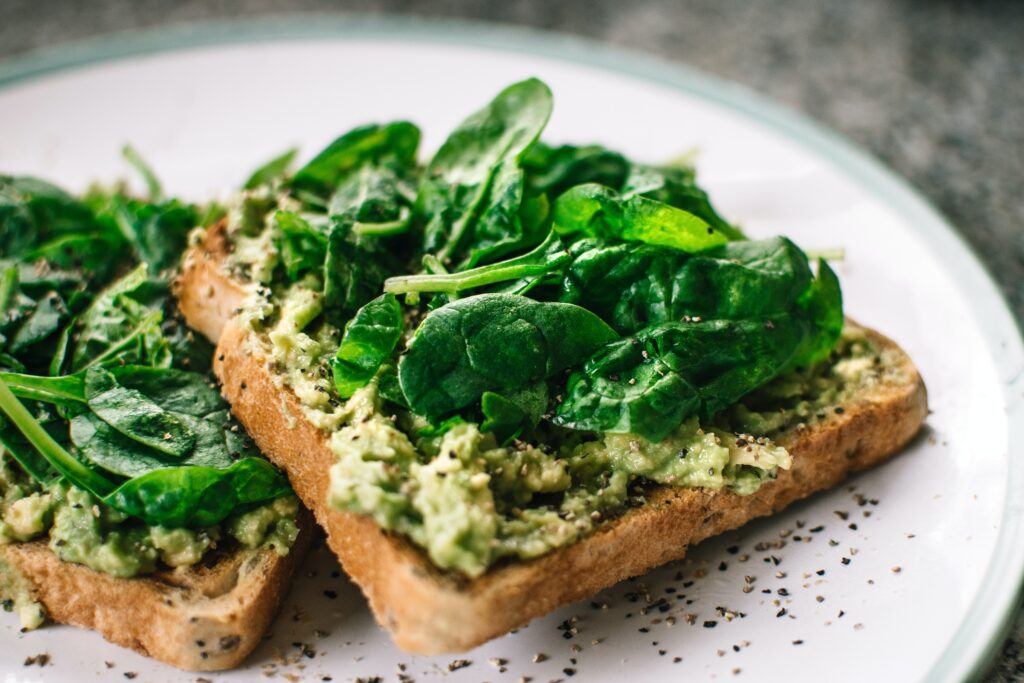
Benefits of Fat
First, what are some of the benefits of fat? Fat is a great source of slow-burning, stable energy for your body. It facilitates the absorption of vitamins A, D, E, and K, is needed for cell membranes and hormone production, helps keep us full for longer, and stabilizes our blood sugar (more on stabilizing blood sugar here!).
You might want to increase your fat if you are:
- Have trouble feeling full after meals
- Experiencing blood sugar instability (feeling like you’re “crashing” after meals or in the afternoon, feeling constant cravings, needing to snack a lot, or getting high A1C or triglycerides in your blood work
- Trying to reduce inflammation
- Looking to put on healthy weight
What types of fat are “good” or “bad”?
I hate the words “good” or “bad” as they relate to food, so the answer to the question in the title of this blog post, “Is Fat Bad?” is definitively NO. But if we ditch the “good” and “bad” labels, there are certainly types of fat that are more or less healthy.
Let’s break down the types of fat:
- Unsaturated fat: this is generally considered the healthiest type of fat. Within unsaturated, there are 2 subtypes: monounsaturated and polyunsaturated.
- Monounsaturated fats are the types most prevalent in the healthy Mediterranean diet, and include olive oil, avocado, some nuts, and some other types of oils.
- Polyunsaturated fats are essential fats, meaning that your body can’t make them, and they must be consumed from food. The “omega-3 fatty acids” that we hear about regularly (as well as the less healthy omega-6 fatty acids) are polyunsaturated fats, and these include fish, flaxseeds, walnuts, chia seeds, and sardines (more on fish oil and omega-3s here!). When we replace refined carbohydrates with polyunsaturated fats, research shows that we can reduce LDL cholesterol, lower triglycerides, and reduce heart disease risk.
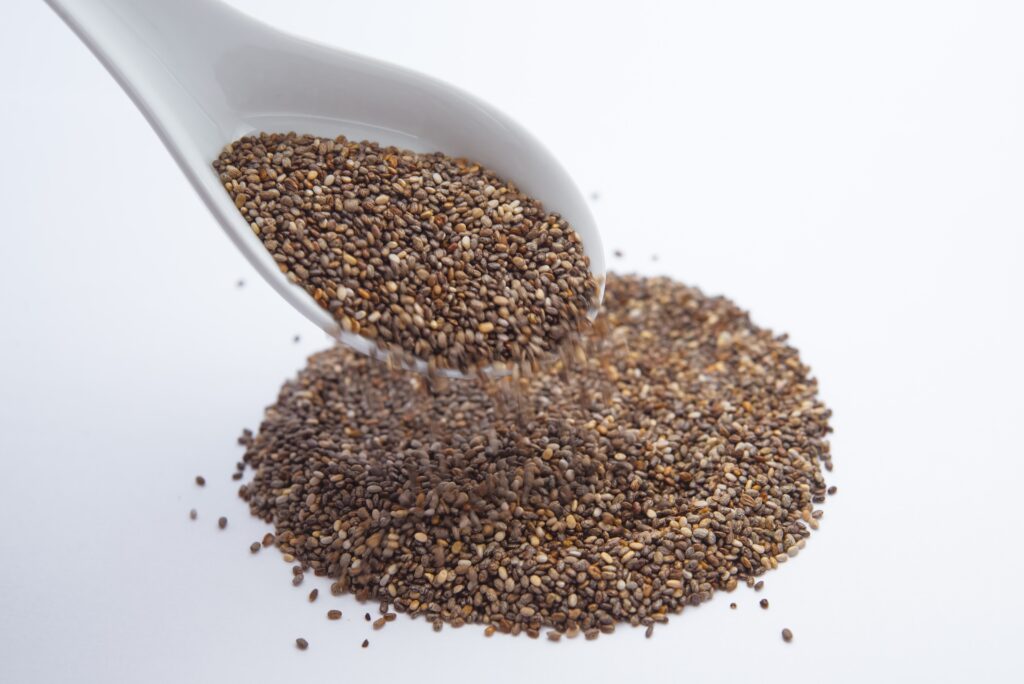
- Saturated fat: for a while, saturated fats were considered the less healthy option, but new research is showing the benefit of a moderate intake of saturated fat for overall heart disease risk. It’s not as simple as lowering your LDL (see this post for a lot more on cholesterol and how to really interpret and manage it!) , because saturated fat actually shifts the types of LDL particles found in your body in a favorable direction. So, consume saturated fat in moderation. This type of fat primarily comes from animal products, like meat, eggs, and dairy, but is also found in coconut oil, nuts, and even avocados.
- Trans fat: the last type of fat is definitely one to stay away from. Trans fats do not occur naturally, and are created by the process of hydrogenation, which preserves the shelf life of food products. Eating any amount of trans fats creates inflammation, which is linked to heart disease and several other chronic conditions. In fact, for every 2% of calories from trans fat consumed daily, the risk of heart disease rises by 23%. If you see trans fat on the label, or anything with the word “hydrogenated” in the ingredient list, I recommend staying away! Trans fat is mostly found in margarine, shortening, French fries, pastries, and commercial baked goods.
How Much Fat Do I Need per Day?
The National Academy of Medicine recommends getting 20-35% of total calories from fat, which, for most people, works out to between 40 and 80 grams of fat per day. For reference, 1 tablespoon of olive oil contains 14 grams of fat, and ½ a small avocado contains 12 grams of fat.
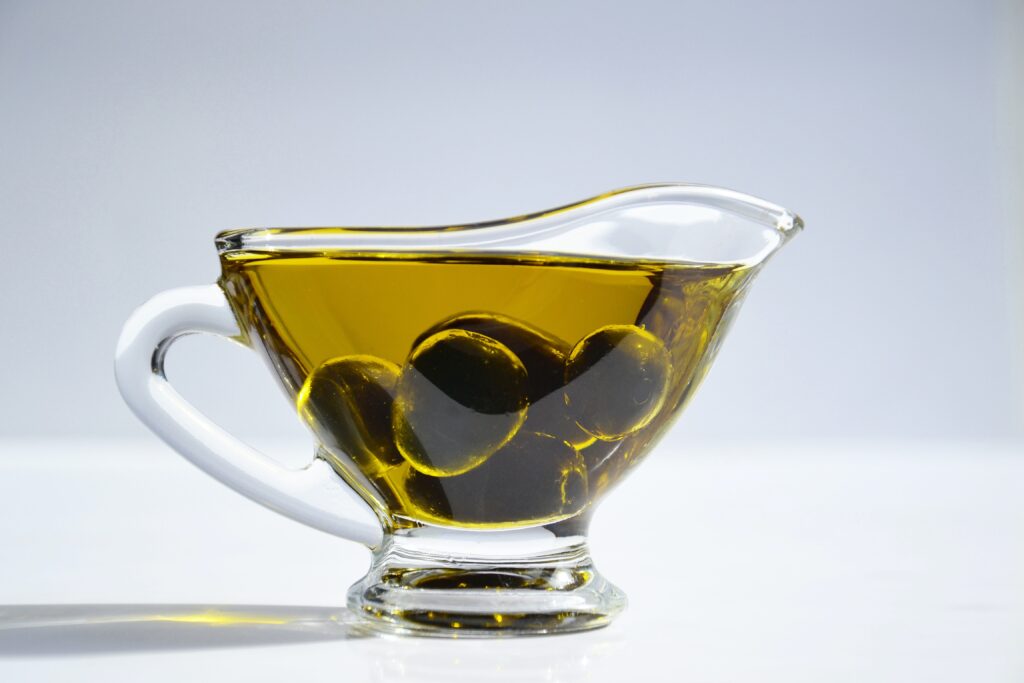
Rather than encouraging my clients to count grams of fat, I usually like to encourage the following:
- If you are looking to lose weight or shift body composition, aim for 1 serving of fat at each meal and 1 at a snack.
- Looking to maintain weight, increase blood sugar stability, and generally feel more stable, aim for 2 servings of fat at each meal and 1-2 at a snack.
- If you are looking to gain weight, aim for 3 servings of healthy fat at each meal and 2-3 at a snack.
Best Sources of Fat
Now that we have a goal, where should we get our fat? Here are sources of healthy fat, along with what is recommended for a serving:
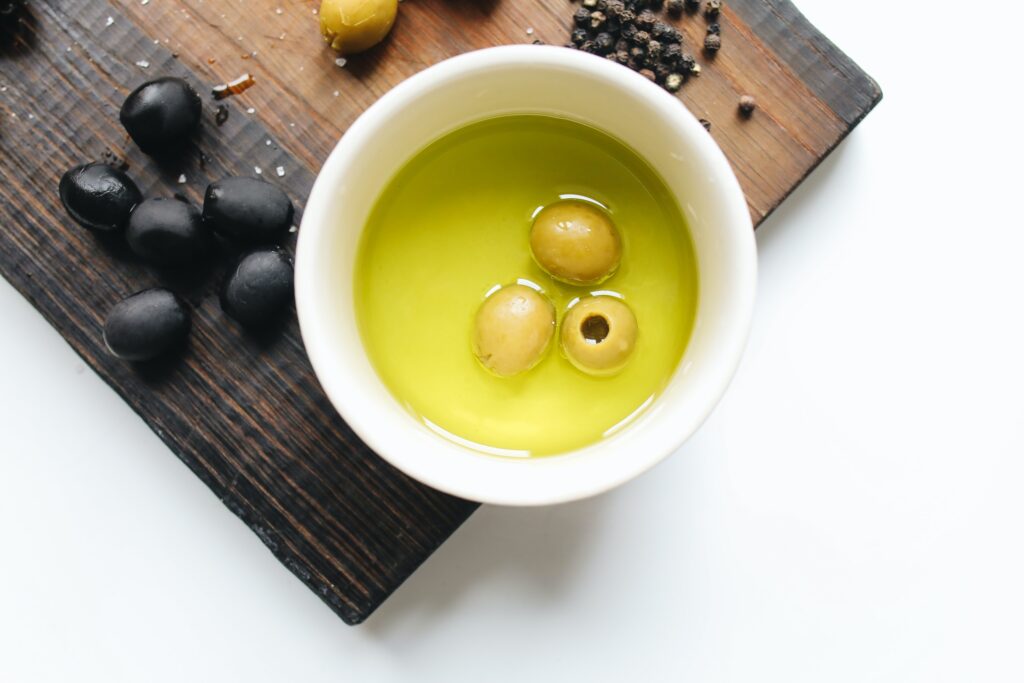
- Olive oil (1 tablespoon)
- Other healthy oils (1 tablespoon … see this post for all about cooking oils!)
- Avocado (1/2 small or ¼ large, or 3 tablespoons guacamole)
- Fish (5 ounces of a fattier fish like salmon, tuna, or mackerel)
- Olives (depends on the olive, but about 10-15 olives)
- Seeds (2 tablespoons of chia or hemp seeds, or ¼ cup of pumpkin or sunflower seeds)
- Nuts (1/4 cup of most nuts)
- Nut butters (2 tablespoons, unsweetened and no added ingredients preferred)
- Egg yolks (2 yolks … the whites contain the protein)
- Coconut (1/4 cup unsweetened shredded coconut, or 1/3 cup canned coconut milk)
- Ghee (1 tablespoon)
- In moderation: butter (1 tablespoon)
- In moderation: cheese if you tolerate it (1 ounce of hard cheese or ¼ cup shredded cheese)
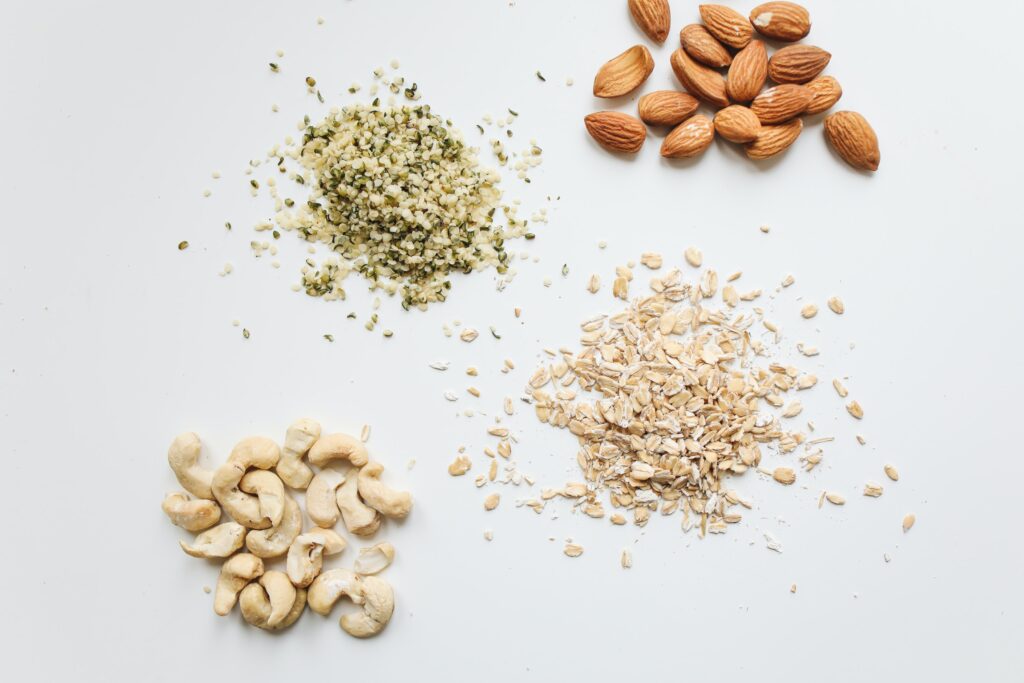
Now it’s your turn … What’s your favorite type of healthy fat? Do you think you’re overconsuming or under consuming healthy fat according to your goals?
Want more? In my Revitalize Health Accelerator, I walk you through every step of what it takes to be a well-rounded healthy person. The information, motivation, and accountability in this program is simply unmatched! You’ll learn everything from inflammation to emotional eating, from supplements to sleep quality, from macronutrient balance to meal planning – I’ll walk you through my proven system to teach you how to implement it. If you’re curious, set up a free call with me here to discuss!

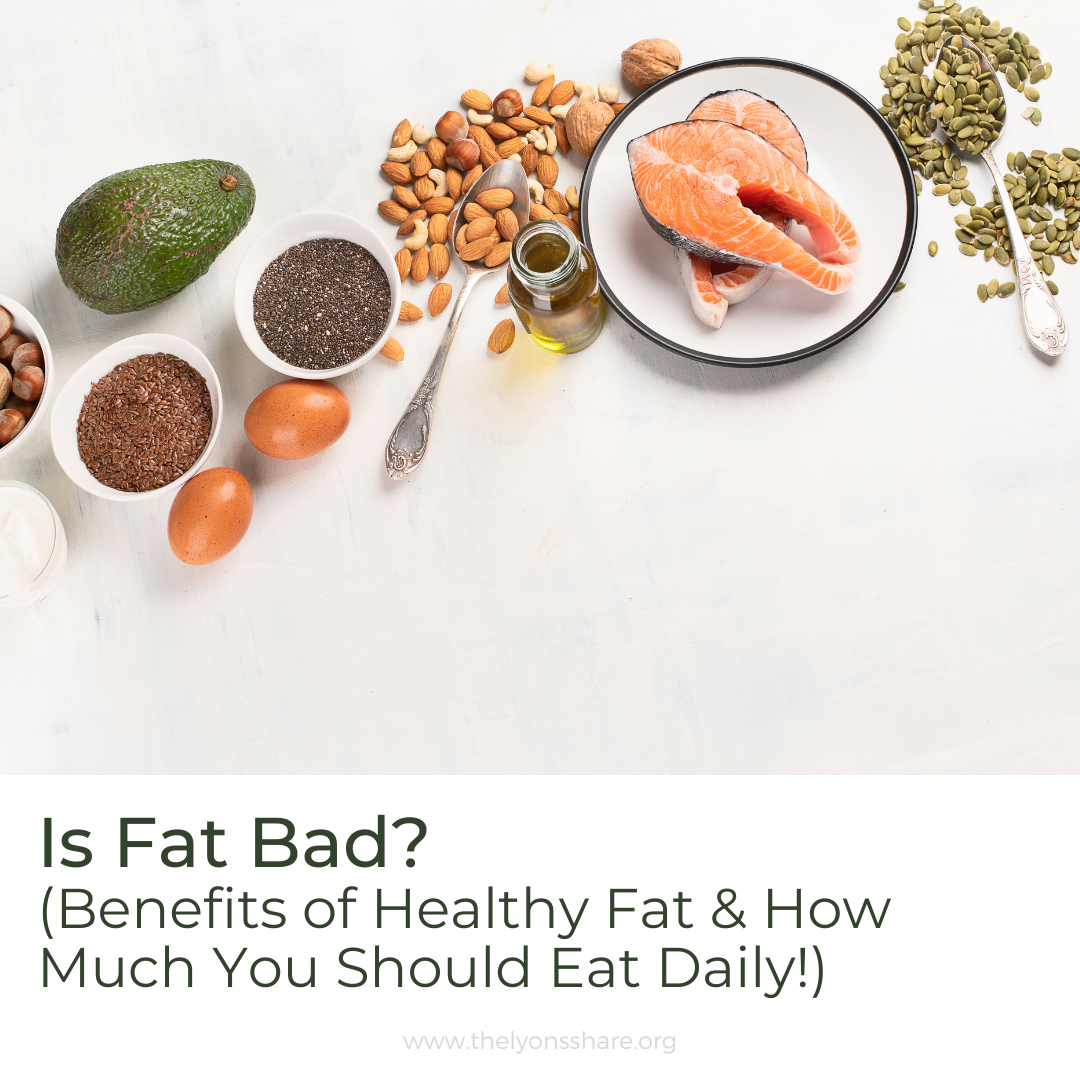
0 Comments